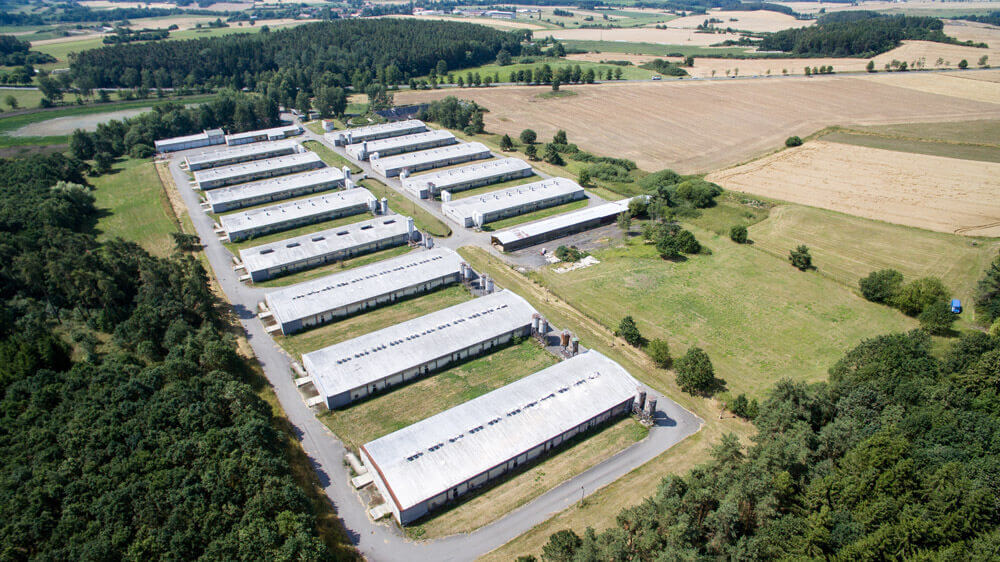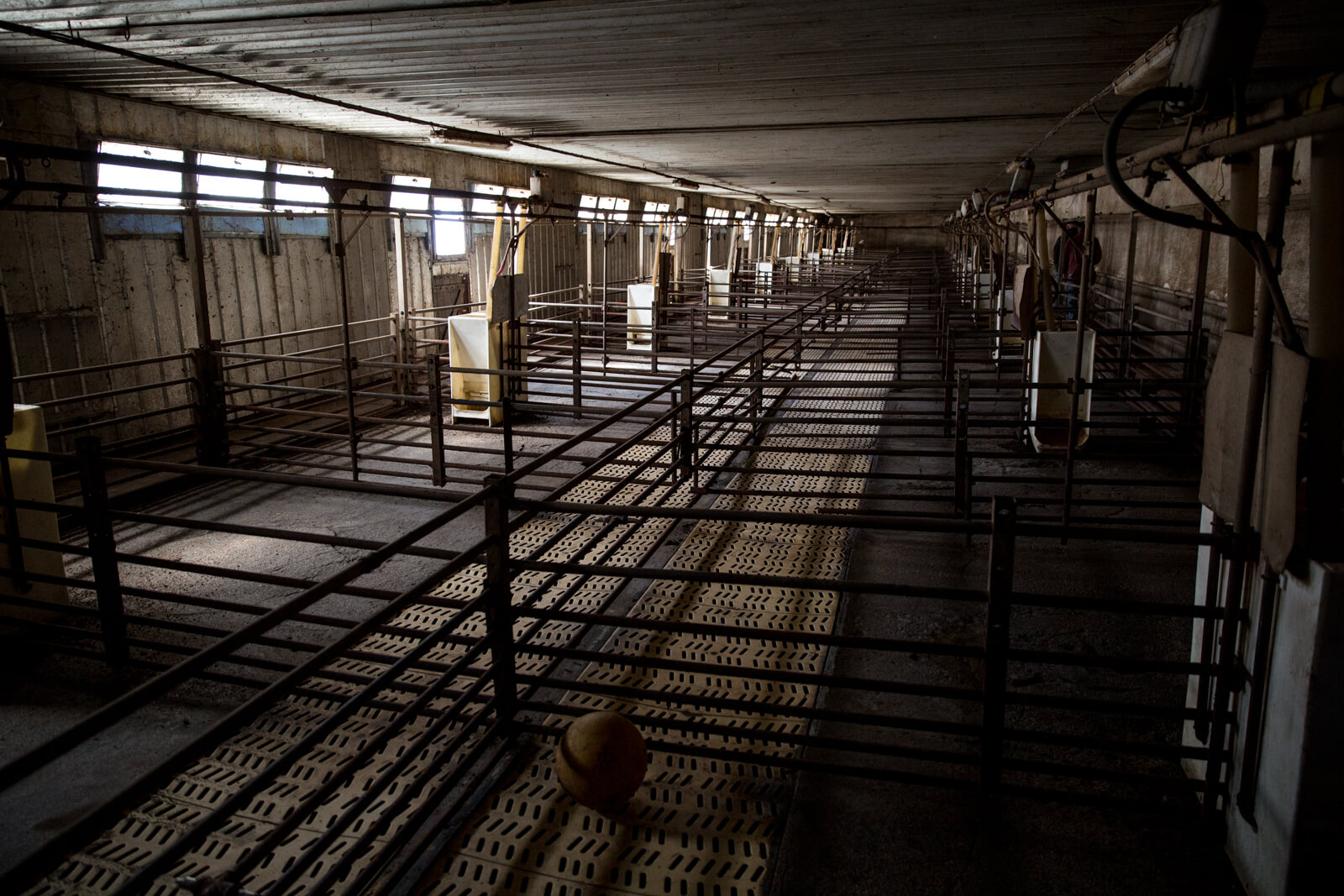


The story of Lety is about facing the past
A stench of manure wafted over a small crowd of people. They had gathered on an industrial pig farm to commemorate Romani victims of the Second World War, but the group’s desire to remember what lay beneath their feet was somewhat overpowered by the terrible smell. Built in the 1970s, partly to create jobs for local people, the pig farm in Lety was a stark reminder of Czech society’s attitude to Roma. It was no secret that the farm was constructed near the mass graves of more than 300 people from the Roma community – men, women, and children who had been murdered by the Nazis just 30 years earlier.
The Lety u Písku camp where the atrocities took place had been run by Czech collaborators, not Germans. Known at the time as the so-called Zigeunerlager I more than 1,000 Roma had been imprisoned there. Disregarding the site and unmarked mass graves in favor of the farm was an attempt by some to forget this dark chapter in the country’s history; for others, it symbolized the persistence of anti-Roma sentiment in Czech society.
Twenty years after the construction of the farm, the Museum of Romani Culture opened in Brno, celebrating the very culture that the Nazis had tried to extinguish in places such as Lety u Písku concentration camp. The message of the museum is clear – Roma culture has deep and rich roots in Czech history and continues to thrive despite the discrimination the community continues to face.
A pig farm at the center of an international debate
The Nazis and their collaborators deemed Roma to be ‘subhuman’ and murdered hundreds of thousands in places such as Lety u Písku, Auschwitz-Birkenau, and other camps and killing sites. That a site related to that genocide was being unceremoniously used as a pig farm was shocking.
Initially a small memorial was built next to the farm. But when memorial ceremonies were cut short due to the manure smell, it was clear that this gesture merely added to the indignity the existence of the farm presented.
Local activists had, since the pig farm’s construction, engaged in creating awareness of these issues. However, taking the final step following successful conversations proved difficult, and significant progress was quickly reversed following an election and a change in government. A turning point came in 2016 with the Romanian IHRA Presidency’s focus on the status of sites across the IHRA’s Member Countries. Efforts to safeguard those at immediate risk increased, drawing on existing political commitments like the Stockholm Declaration (2000) and a 2007 Declaration from the Czech IHRA Presidency underlining the importance of education on the genocide of the Roma. The pig farm in Lety was high on the agenda and the Romanian IHRA Chair Ambassador Mihnea Constantinescu was soon making trips to visit the site.
Eventually, after decades of campaigning by local activists and increased efforts by the IHRA, the conversations were pushed over the finish line: the pig farm was redeemed by the Czech government and acquired by the Museum of Romani Culture.

Overcoming the odds to remember victims
The team at the Museum of Romani Culture knew they had a great responsibility to honor the victims and survivors of the camp by creating a concept for a memorial.
As Project Lead Anna Míšková explains, they “had never worked on such a big project before.” They felt the only way to curate a meaningful memorial and exhibition was to step out of their comfort zone. The team looked beyond the parameters of their usual network – and beyond their national borders – to seek out ideas and inspiration for their project: “We made a list of the institutions outside of the Czech Republic that we wanted to visit to develop the concept for the exhibition of the memorial – we knew we needed extra resources to make these visits a reality.”
When they were awarded the IHRA grant, a world of expertise became available to them, and they could fully realize their goal of creating the concept for the new memorial using expertise outside of their usual pool. With the IHRA funding, the team was able to visit well-known memorials dedicated to victims of Nazi persecution in Norway, Germany, and Poland. Seeing how others commemorated similar atrocities helped the team to understand how to deal with the sensitivities of such a site and how to harness a memorial as a place of education for people of all generations. “The organizations we visited gave us tours of their exhibitions and shared their experiences of curation, in turn we shared our ideas with them and gained valuable feedback, which we used when creating the concept.” The visits helped the team to understand the importance of including individual stories in the exhibition and integrating a digital aspect.
The team planned further site visits but in March 2020, the global pandemic meant the team had to cancel their plans. Forced to hold meetings online and work from home, Anna jokes that the project only endured due to “little sleep and sheer luck.” “Communication was key to keeping the ball rolling – the support of the IHRA Permanent Office during this time helped the team to find their way through the crisis,” she says.
Anna reflects that the project had to continue because it was too important not to: this project is about “Czech society making amends for the past” and changing the narrative of what happened to Roma communities during the Nazi era, especially on the site of Lety u Písku. In doing so, she hopes that the exhibition will combat anti-Roma discrimination, both in the Czech Republic and beyond.
The exhibition will consist of an outside space, detailing the history of the site from the perspective of Roma communities, and an indoor space, which will go into more detail about Roma and non-Roma perspectives. An on-site educational program will be offered to young people, following stories of individuals who were interned in the camp, something they were inspired to offer after visiting other sites. Much of the exhibition will be interactive, ensuring that younger audiences will remain engaged, as well as leaving room for information to be updated in the future.
Sites of memory as tools against distortion
Many locals who live in the area, including those who lost their jobs due to the farm closure, have not welcomed the idea of a memorial on the site. “Some of the locals say that Lety was a labor camp, not a concentration camp. Some people don’t even know about the genocide of the Roma,” says Anna, explaining how distortion of the history of Lety coupled with the lack of knowledge about what happened to Roma during the Nazi era is playing a part in local discontent.
To help forge stronger local links, local residents had a say during the concept creation process and will be invited to visit once the exhibition opens. Anna hopes that once all the information is on display for locals to see, they will begin to understand the history and the importance of the site as a place of remembrance – and in doing so will combat the distortive narrative surrounding Lety.
“However, the biggest measure of success for us is that the families of survivors are happy with the final concept,” says Anna. These families were able to participate in the curation of the project by remaining in close contact with the team throughout the process and being involved in important decisions such as the decision to include photographs of their loved ones as part of the memorial. This goes to the heart of the work at the Museum of Romani Culture, where Roma communities are central to the exhibitions.
Once a place where people gathered, struggling against the stench of the pig farm, to commemorate those who had been killed at Lety u Písku concentration camp, the site will soon have been transformed. Thanks to this project, from 2024, visitors will be able to remember those who lost their lives in the camp, and learn about the discrimination of Roma during, and after, the Nazi era. In doing so, the site will act not only as a place of remembrance of those who were killed during the genocide of the Roma, but also as a reminder that anti-Roma discrimination has no place in society.
More information about the exhibition can be found at www.rommuz.cz/en/www.rommuz.cz/en/
The IHRA’s 2023 grant application programme will open for applications on 19 June until 29 September 2023. For more information and to apply:
https://www.holocaustremembrance.com/resources/funding
Sign up to our newsletter to
receive the latest updates
By signing up to the IHRA newsletter, you agree to our Privacy Policy


